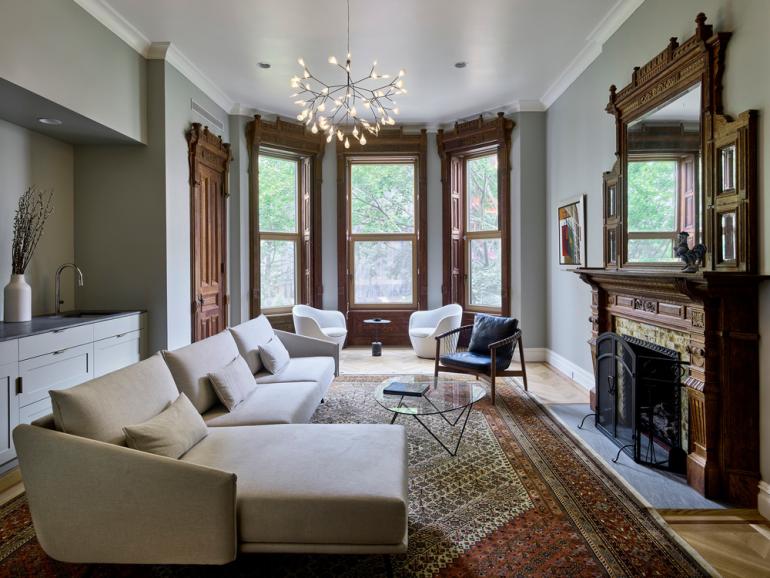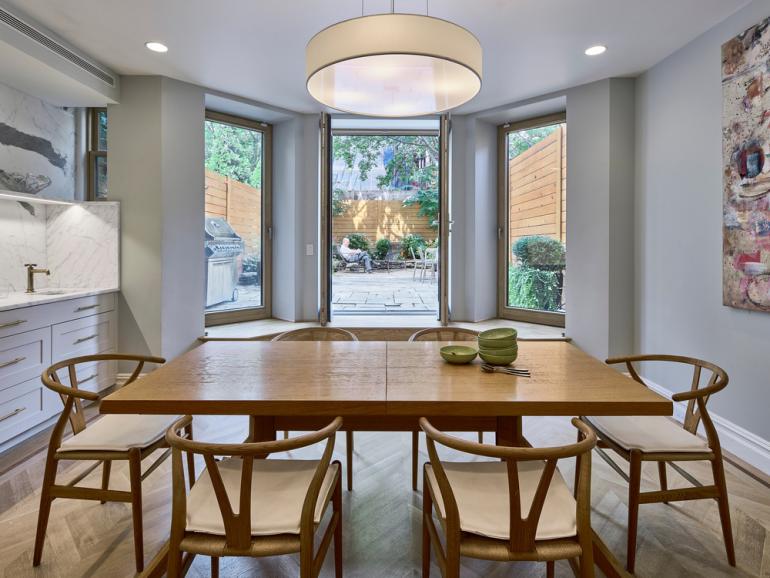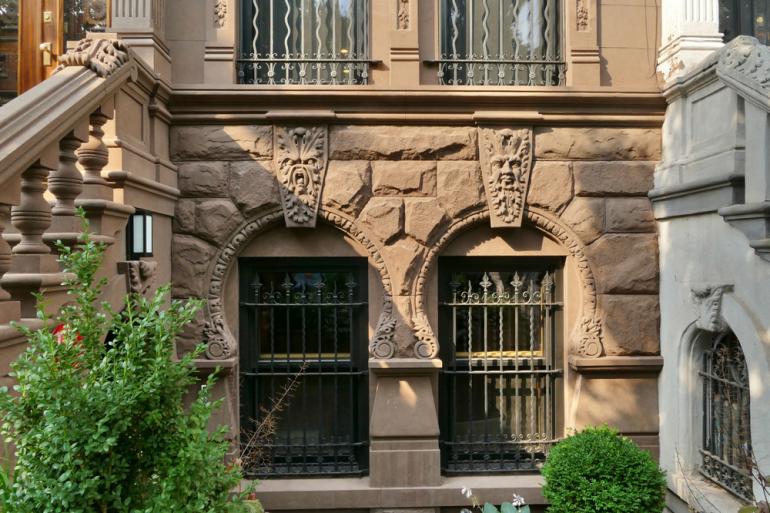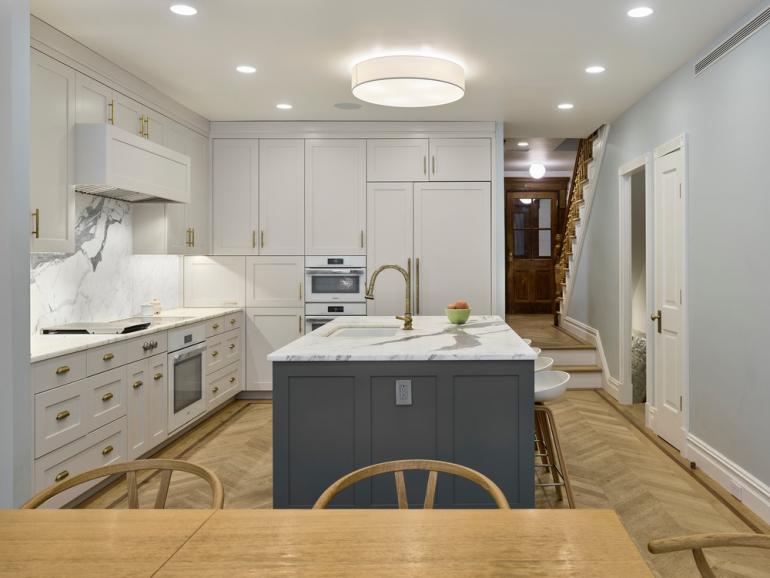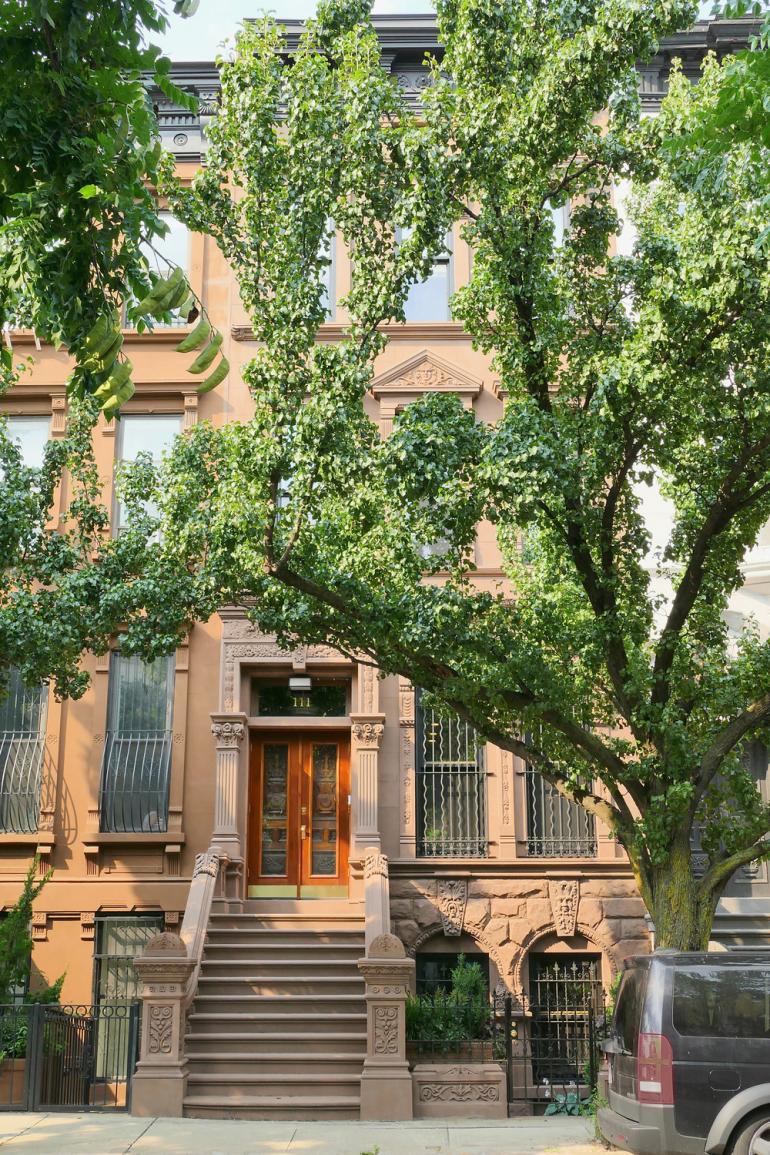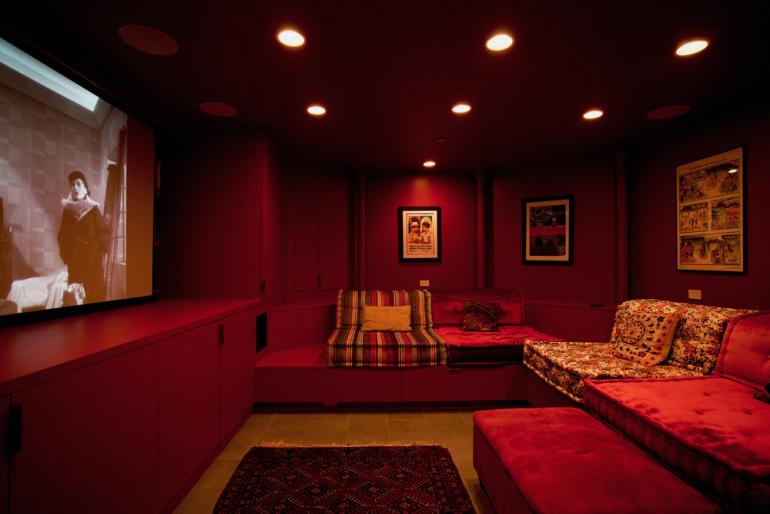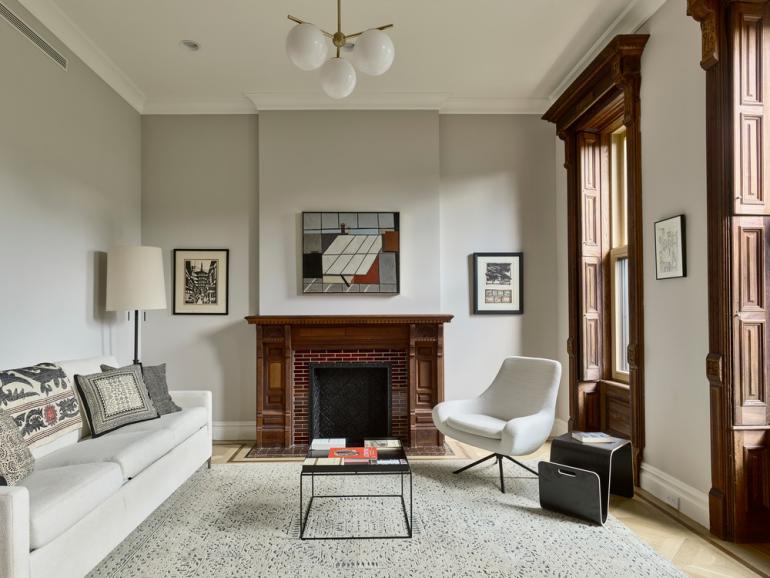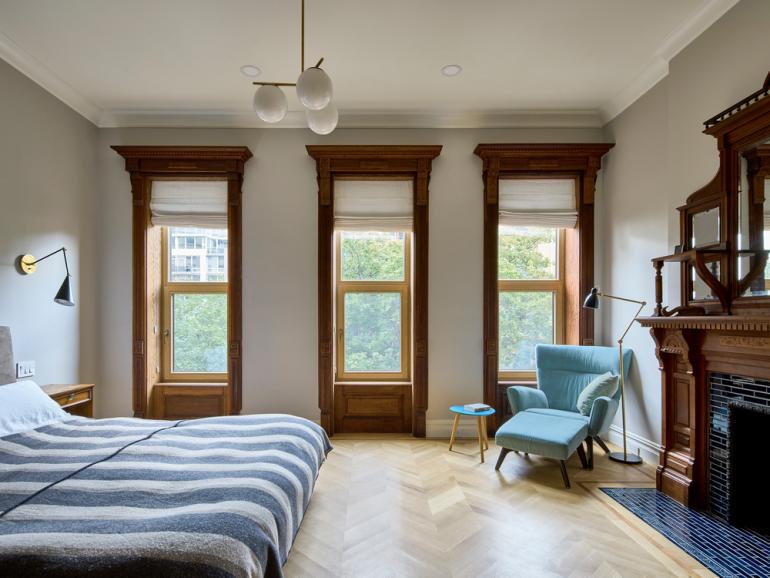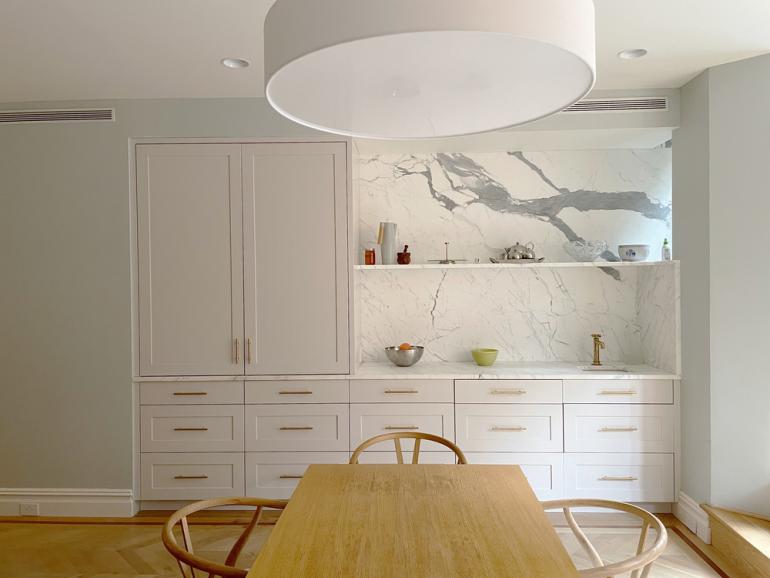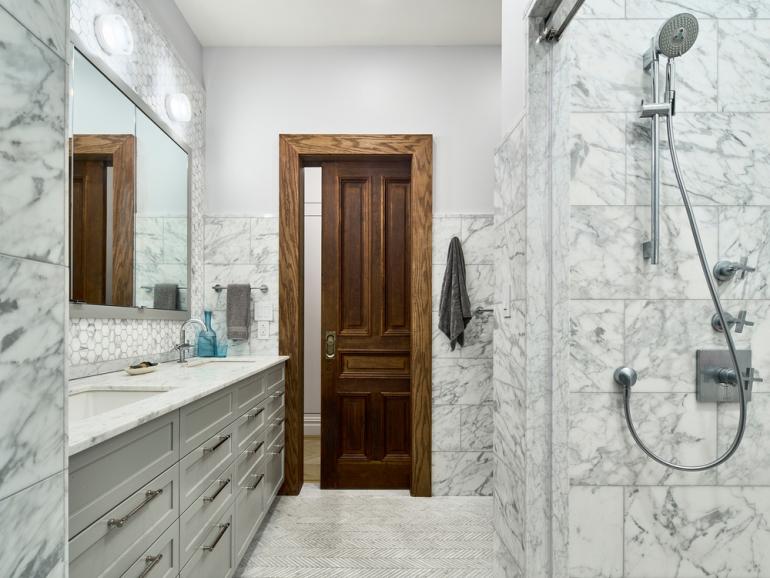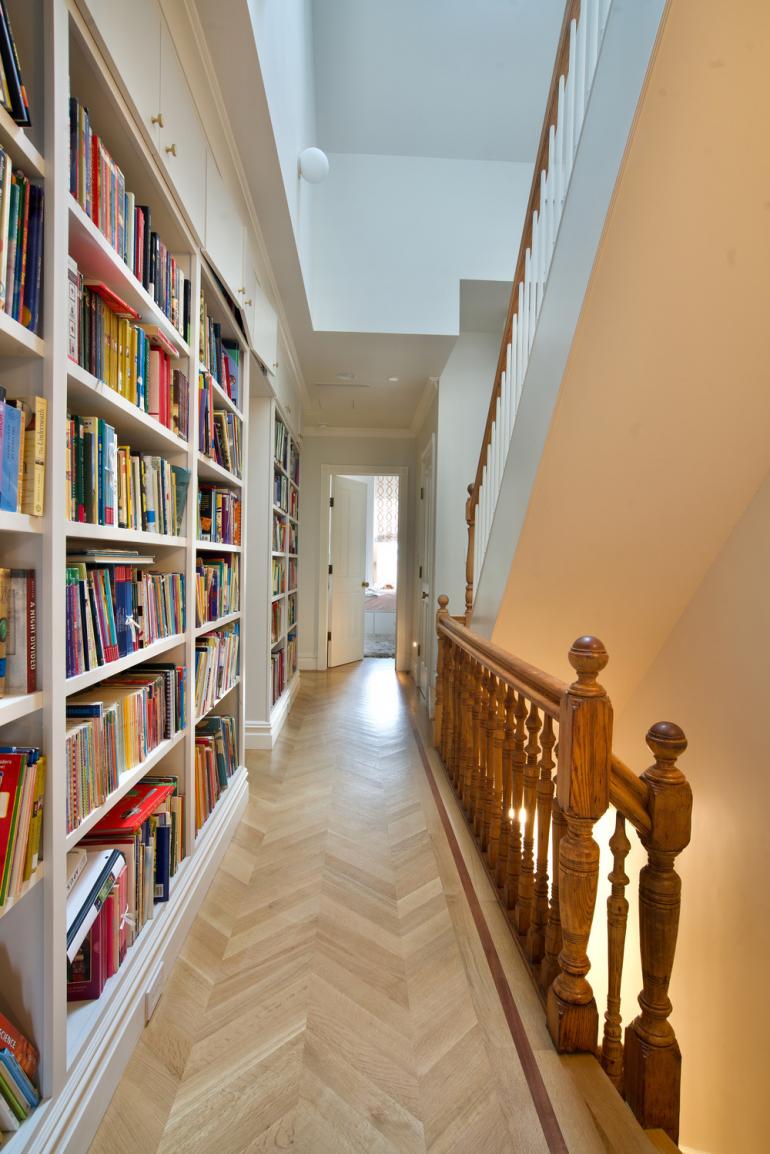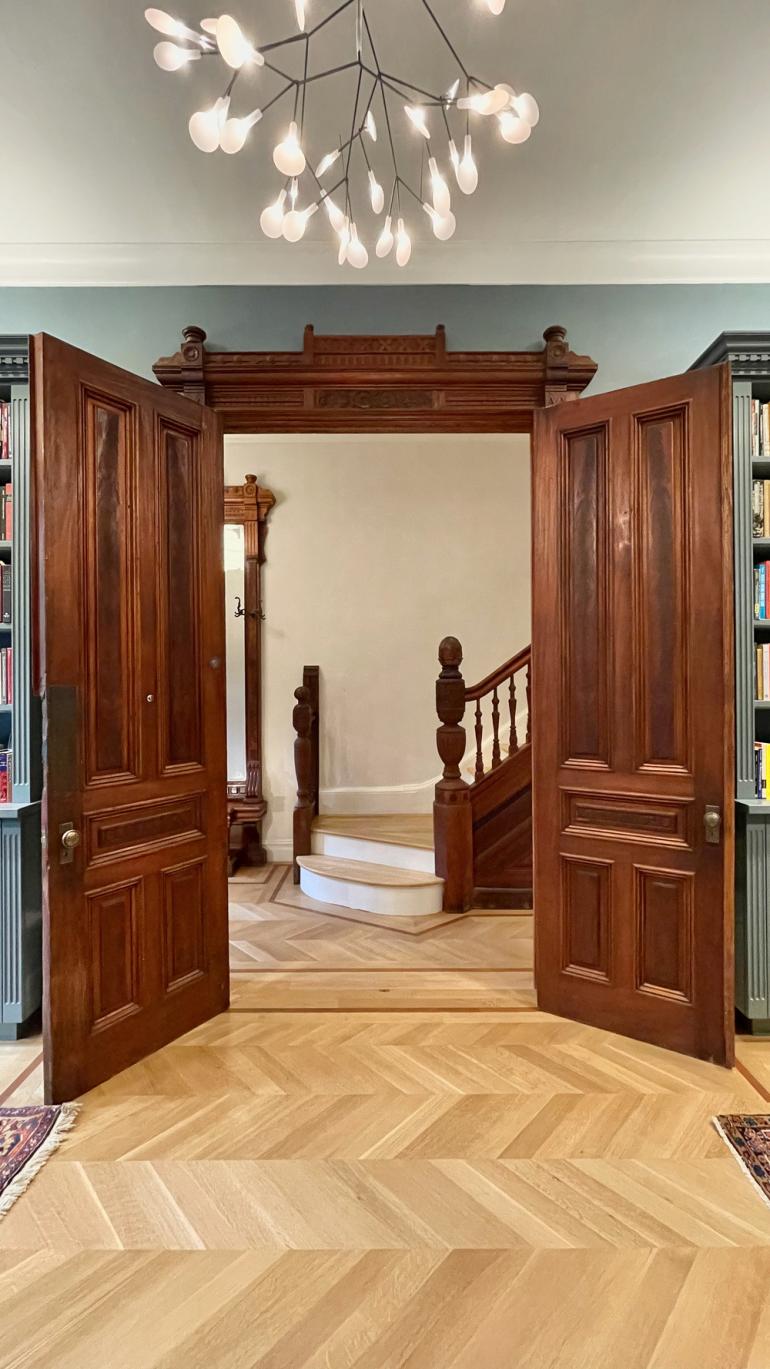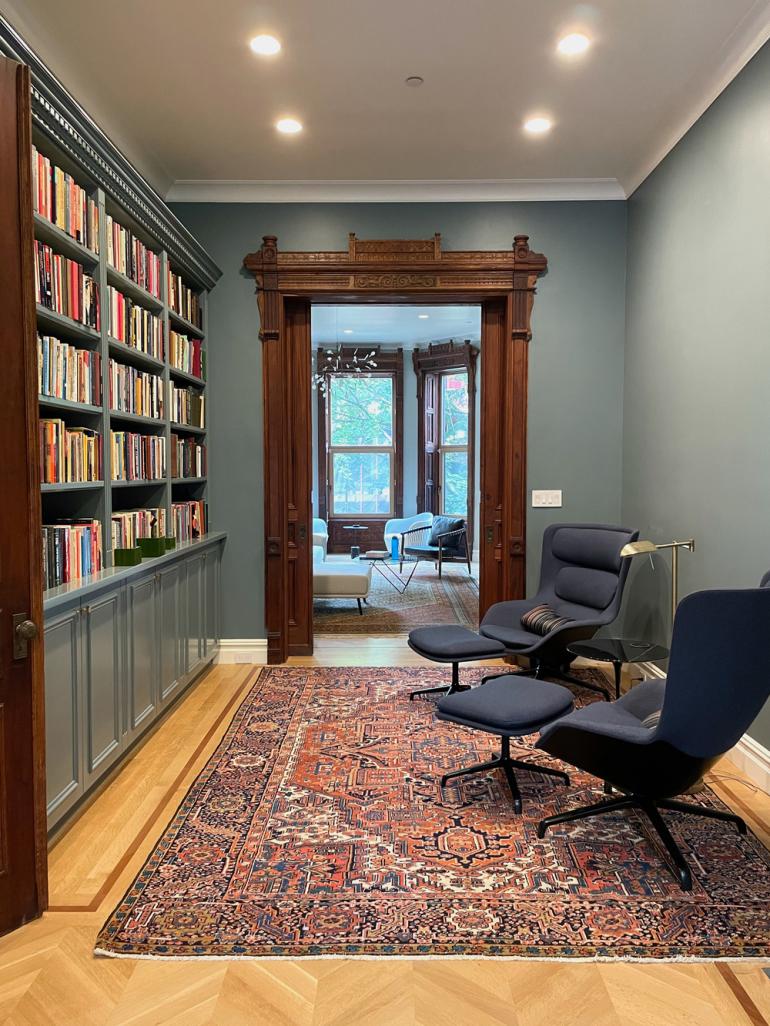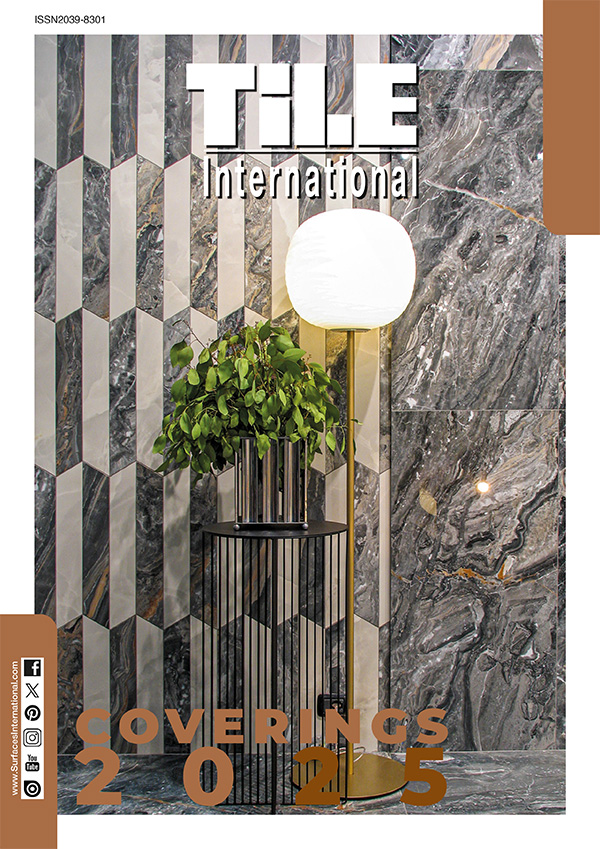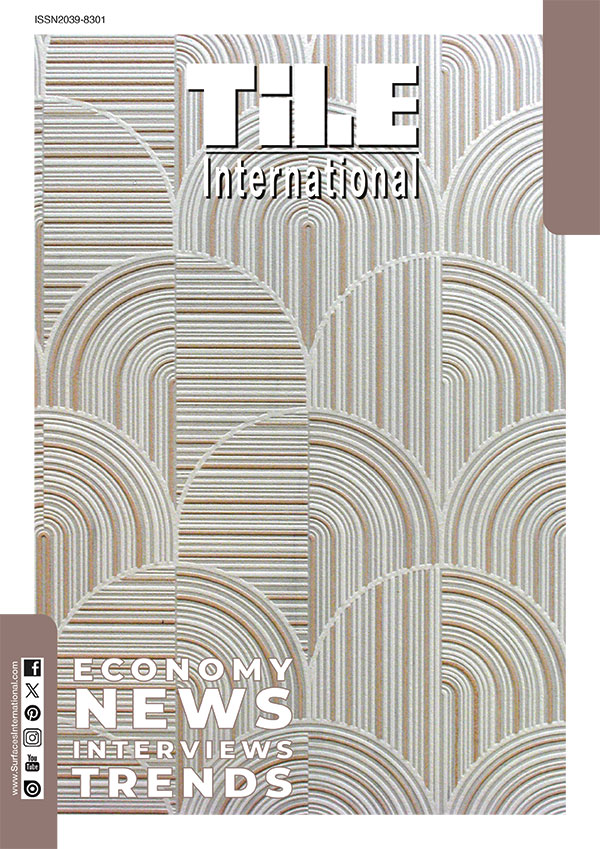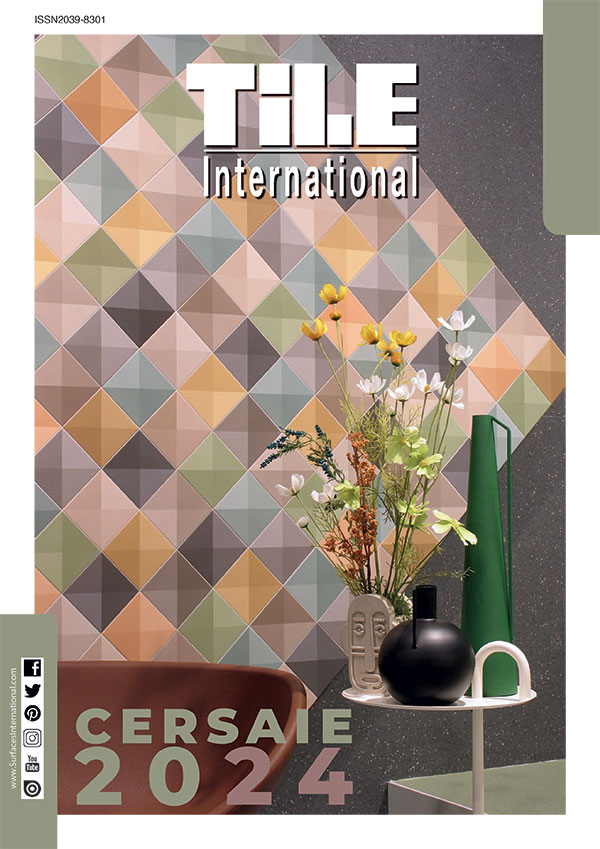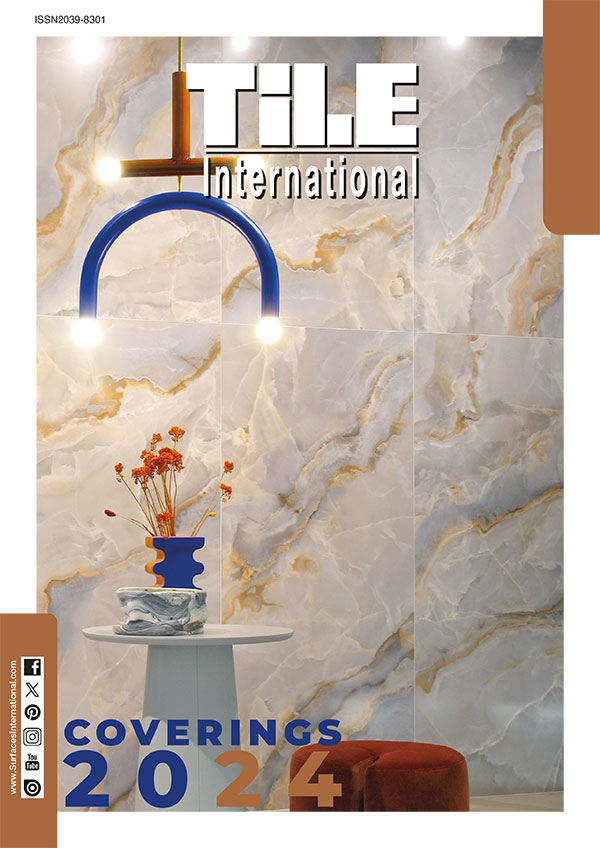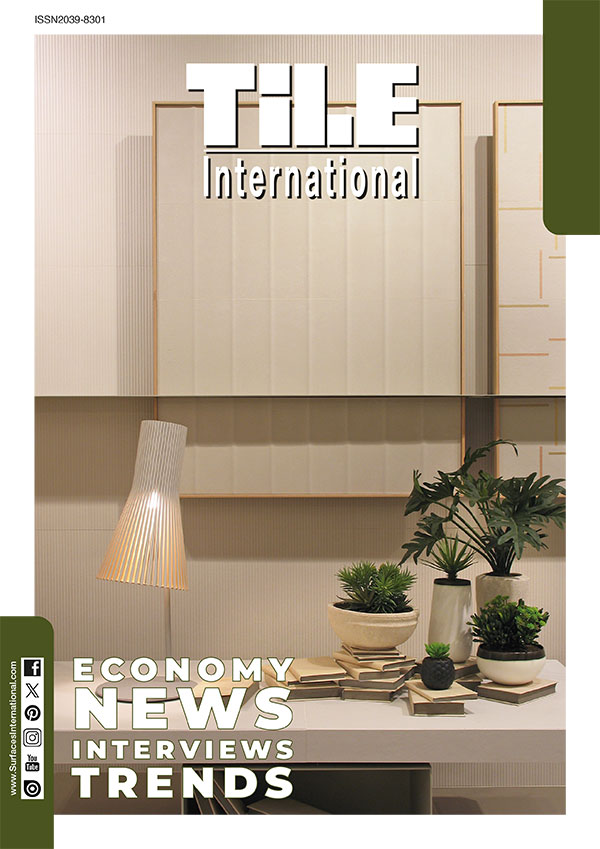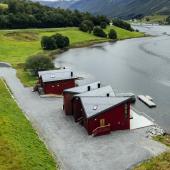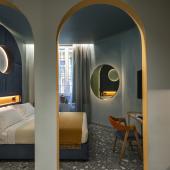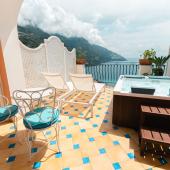A modern passive house in the heart of historic Harlem
MESH Architectures designed the restoration of a single-family house, salvaging antique woodwork, while bringing the house up to passive-house standards. The result is a home full of 19th-century detail that is stingy with energy use and full of fresh air.
The house, located in the middle of historic Harlem, in New York, had declined to a broken-up three-family dwelling. The owners - a college professor and corporate consultant with four children - wished to restore it to a single-family dwelling, while repairing the extensive original woodwork around the windows, doors, stairs, and fireplaces. At the same time, they wanted to introduce transitional modern elements where appropriate. After learning about the passive house standard that dramatically reduces energy use through insulation, air sealing, and efficient heating and cooling, while providing constant fresh air, it became part of the program as well.
The design
The house is large by New York City standards: a cellar plus four stories. The kitchen and dining room are located on the ground floor (English basement), leading out to a garden in the rear. The living room and library are on the parlor level. The master bedroom and home office/guest room are located on the 3rd floor, with four daughters in four bedrooms on the fourth. The cellar, which was previously a mechanical space, was excavated and renovated into a home gym and media room.
Once the rooms were laid out, the house’s historic fabric was catalogued for restoration and, in some cases (doors), relocation. Fixtures are a blend of transitional and historical. The kitchen was designed by the architects and built by a local millworker. The decorated stucco facade (known in NYC as “brownstone,” because it is colored to resemble actual brownstone) was completely restored by specialists, Edson.
The “Passive” concept
The facades and roof were air sealed and insulated with ample blown-in cellulose insulation. The windows are passive-house standard, triple-glazed from Zola. The gas line to the house was capped, and an efficient electric heat pump system heats and cools the house. An ERV (energy recovery ventilation) system brings in fresh, outside air after conditioning it with the energy of the exhausted, stale air. This all adds up to very low energy use and an exceptionally comfortable and healthy environment. The owners chose not to pursue passive house certification, as it is the performance, not the certificate, that they desire.
This house is one of a growing number of old houses retrofitted with the latest energy-efficient technology, demonstrating that passive house is not only for new construction. These renovated houses can preserve the look and feel of a classic row house, while providing healthy air, saving energy, and emitting no carbon (or other pollutants). As energy generation becomes cleaner in the decades to come, houses like this one will approach a zero-emissions footprint.
Photo: Frank Oudeman

